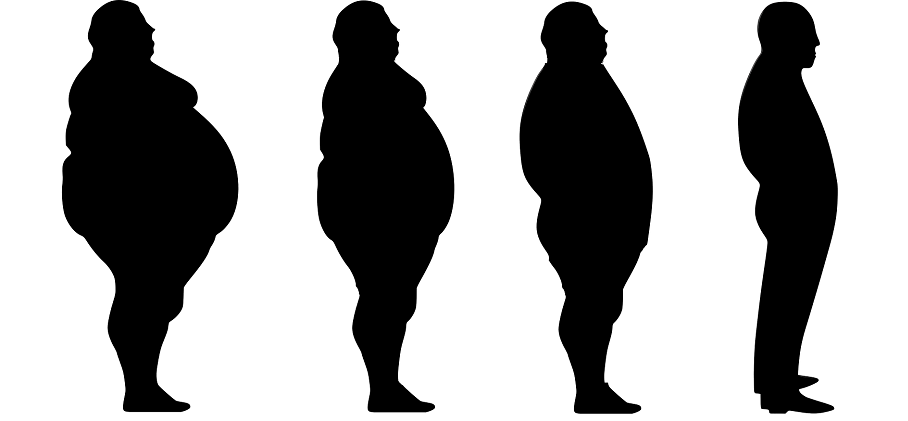
“You don’t understand—I have a slow metabolism.”
I loved using this line for the first 10 years of my fitness journey.
It was the ideal cop out and the perfect motivator. I looked at genetic freaks like my wife and told myself I’d been dealt a bad hand in life, so I had to work harder than everyone to get fit.
Do you know where this excuse got me? Nowhere!
I was the Lance Armstrong of spinning my fitness wheels. By believing the lie that metabolism and my somatotype (or body type) defined my destiny, I doomed myself to years of endless frustration and a lack of results before I finally figured out how to hack fitness.
Don’t buy into the BS like I did. Your metabolism is not that damn important.
In this post, I’m going to examine the myth of metabolism and somatotypes and see why these factors are ultimately powerless to shape our fitness journey.
Somatotypes Are a Starting Point, Not an Endpoint
Somatotypes were first defined by American psychologist William Sheldon in the 1950s. After looking at thousands of people, he created three body type classifications:
- Ectomorphs: Super lean, they have a hard time building muscle or keeping any weight on
- Mesomorphs: Stockier with a more muscular build, they hold more body fat than ectomorphs
- Endomorph: Typical chubby build with love handles or a belly that sticks out

This is the famous Garfield-Manning-Gandolfini Visualization. From left to right, the you can see an ectomorph, mesomorph, and endomorph.
William Sheldon’s research assistant, Barbara Heath, along with Lindsay Carter, further developed this research in the 1960s and the three classifications became widely accepted.
Fitness professionals started using somatotypes religiously because it gave them a starting point for designing exercise and diet regimens for clients.
The “slow metabolism” excuse was born out of the endomorph classification.
Since people with that body type were naturally chubbier and had a harder time losing fat, the blanket excuse became that they were born with a slow metabolism.
Over the years, millions of people like myself have been tricked into thinking our genetic disadvantage—this bad hand we’d been dealt—dictates our level of fitness.
Here’s why that notion is total bullshit.
You Can Change Your Somatotype
First of all, somatotypes represent a sliding scale, not three distinct categories.
Second, we have the ability to move back and forth along that scale based on our nutrition and fitness. Regardless of your genetic predisposition, you can change your somatotype.
Drew Manning demonstrated this ability in startling fashion when he gained 70 pounds for his book, Fit2Fat2Fit. (Drew also has a great podcast I was a guest on recently!)
As a muscular fitness trainer, Drew began this journey looking like a genetic freak. After six months of consistent weight gain, he’d become an overweight endomorph.
The way Drew described the chemical and physiological changes to his body were fascinating. He said he didn’t want to get up from the couch to do chores or play with his kids.
Six months later, after he’d lost all the weight, he was back to looking like a genetic freak.
It’s true that people are genetically predisposed to handle energy consumption in different ways. Some people store more fat while others burn it more efficiently.
But our choices have a huge impact on our metabolism. Being overweight causes your metabolism to slow down and makes it harder for you to burn calories.
Being on a program like Hack Your Fitness that mixes strength training with proper nutrition transforms your body into an optimized fat burning and energy consuming machine.
Let’s look at how you can start changing your metabolism and somatotype today.
You Need Proper Nutrition and Strength Training + Hard Work
No one is born looking like Arnold Schwarzenegger.
Even fitness gods like the Governator, who was born with great genes, have to work their asses off to achieve the bodies we see onstage at competitions.
No matter how good your genetics are, you still have to work hard in order to get fit. You can’t rely on your genes or a fast metabolism to make up for a lack of exercise or a bad diet.
On the flip side, a slow metabolism or endomorph body type can’t hold you back if you bust your ass with a proper strength training regimen, obey the law of energy balance, and consume the right balance of protein, fat, and carbohydrates (macronutrients).
Endomorphs might have to work harder to move along that scale, but it can be done.
No matter your starting point, you need to focus especially on the nutrition side of things because that’s where you’re going to be most tempted to slack off and cheat.
Just know that fitness is 85% diet and 15% exercise. The exercise portion will be hard work, but if you’re not disciplined on the diet side, you’re going to spin your wheels for a long time.
If that happens, you can only blame yourself… not your slow metabolism!
